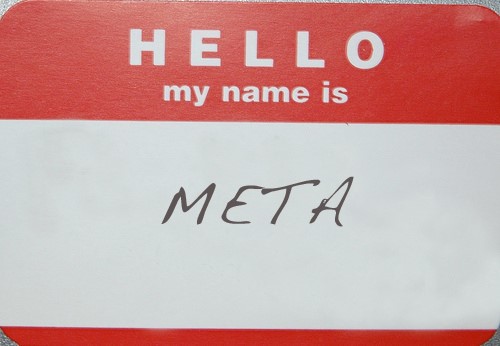As an SEO practitioner, you have most likely experienced how Google’s algorithm updates affect your work from time to time. And most of the adjustments you’ve made to your SEO strategies probably had something to do with Google algorithms. But have you ever taken the time to find out how these algorithms work? How does Google crawl through the millions of websites currently available and index them? More importantly, how do the algorithms rank these websites?
If you haven’t taken the time to find the answers to these questions, or if you haven’t even wondered about them at all, why not? Haven’t you realized the importance of those answers? Think about it. When you understand how the Google algorithm works, you understand how you can make your web pages rank as high as possible in search results.

Programs known as spiders browse (or crawl) the Internet to find and index every single page on the World Wide Web.
Okay, then, let’s take a closer look at Google algorithms and how they crawl through the Internet. Are you ready? Here goes…
First things first. Only Google knows the specifics of its algorithm. So, the discussion that follows is a combination of general principles. How search engine algorithms work and a bit of informed guesswork on how Google does its thing. Of course, we also have to consider the fact that algorithms are constantly changing, so we really cannot delve into exact specifics.
So, here’s what generally happens “inside” Google. Programs known as ‘spiders’ or ‘bots’ are designed to browse the Internet in the same way people do. These spiders move from one link to another, from one web page to another, and from one website to another. Their job is to find and index every single web page on the Internet. Real spiders typically crawl, so what Google’s spiders do is also referred to as crawling.
If you leave your website untouched, Google’s spiders are likely to crawl through it just once every six months. To increase the frequency of crawling and indexing for your web pages, you should regularly update your web content. Crawls in that case can happen several times each day.
Common Mistakes That Prevent Crawling/Indexing: Avoiding Google Algorithms’ Pitfalls
Do your best to avoid the following mistakes to ensure Google crawls and indexes your web pages, thereby increasing your chance of ranking well on search results:
- DNS/Connectivity Issues – Such issues can make your servers unreachable. How, then, can Google index your web pages if it can’t even reach your servers? Be sure to check for these issues regularly and correct them immediately.
- Inaccurate URL Parameters – Part of your job as an SEO specialist is to tell Google which links you do not want it to index, via the Google Webmaster Tools. When setting your parameters, be careful not to make mistakes, as a single mistake can cause Google to drop certain pages from indexing on your website.
- Poor Titles and Meta Tags – You should know by now that there is a right way of writing titles and Meta tags. Poorly written titles and tags will also cause Google to drop your pages from indexing. You may want to use some SEO plug-ins to help you improve your Metadata.

Make sure your titles and Meta tags are written properly, or your web pages may be dropped from indexing.
- Neglected Page Rank – If you don’t take the time to implement SEO strategies for improving page rank, your web pages are unlikely to get ranked as often as you’d like. Google’s Matt Cutts himself has said that the number of web pages on your site that Google crawls is roughly in proportion to your page rank.
- Absence of or Inaccuracy in .htaccess or robots.txt Files – It is very important for you to get these configuration files right because they determine which of your web pages are accessible to Google’s spiders.
Preparing for Google Algorithm Updates
There is a running joke within the SEO and search marketing community. Whenever Google announces the launch of another algorithm update, they tell people to prepare their sites. This joke is the result of horror stories told by search marketers whose websites suffered considerably following one or more of Google’s algorithm updates. Naturally, you wouldn’t want Google to suddenly throw your website out of search results after an update. That’s why you need to be prepared for when another update strikes. Perhaps the best way to prepare for future updates is to review the impact of the most important updates in recent years.
Google Caffeine – Google released this update in 2009 to scrutinize website architecture, which continues to factor into rankings to this day. When this update was rolled out, it had little to no impact on site rankings.
Google Panda – Google released this update in 2011 to penalize websites that publish low-quality content. It also hit sites with duplicate content, too many advertisements, and other black-hat SEO techniques. This update is why content came to be known as the king of SEO. The impact of this update was huge and started all the horror stories. Fortunately, many of the affected websites have managed to recover.
Google Penguin – Designed to regulate spammy and/or overly-optimized websites, this update was released in 2012. Google penalized black-hat SEO practices like keyword stuffing and link-buying. Rewards were given to websites that practiced white-hat SEO and offered real value.. Just like the Panda, the impact of this update was huge and had search marketers scrambling to rethink their strategies.

Designed to regulate spammy websites, the Penguin update made a huge impact and had webmasters rethinking their strategies.
Google Hummingbird – Released in 2013 in time for Google’s 15th anniversary, this update was designed for speed and precision, much like the bird after which it was named. The focus of this update is on search itself, rather than on websites. It refreshed the search engine such that the algorithm. Now interprets the meaning of a particular query, instead of the individual words used in the query. Experts say this update made Google smarter and also emphasized the importance of high-quality content even more.
Google Pigeon – Released in 2014, this update is designed to emphasize local results. The impact is still starting to be felt, but most webmasters have already taken the necessary steps to make their websites more open to local search.
Google algorithms are always changing, but the fundamentals have remained the same. As long as you continue publishing excellent content, taking care of on-site SEO, and earning high-quality organic links, then you should continue enjoying high rankings.
Exploring Google’s E-A-T Criteria: Expertise, Authoritativeness, and Trustworthiness
In the big online world, where lots of websites compete, Google’s search rules are super important. They decide which sites show up first when you search. Google looks at three big things: how much you know, how much people trust you, and how much of an expert you are. They call it E-A-T.
Let’s talk about each one and why they’re important, using coaches as an example:
- Expertise: Google wants to show sites made by smart people who know a lot about coaching. For example, if you’re looking for basketball tips, you want advice from a coach who knows their stuff. Google checks if the coach is qualified, experienced, and successful in their field.
- Authoritativeness: This is about how much people trust a coaching website. If lots of other sites link to your coaching site or say good things about it, Google sees you as an authority. So, if ESPN mentions your coaching tips, Google thinks you’re pretty legit.
- Trustworthiness: Google wants to send you to sites you can trust. They look for coaching sites that are honest, clear, and safe. If your coaching site has clear info, good reviews, and a secure connection, Google knows users can trust you.
Why does this matter so much for coaching websites? Because Google wants to give users the best coaching advice. They keep updating their rules to make sure you get good results when you search for coaching tips. That’s why understanding E-A-T and keeping up with Google’s algorithm updates is important for coaching websites.
So, if you’re a coaching website owner, focus on creating great, accurate content, building your reputation in the coaching world, and making sure your site is trustworthy. That way, Google is more likely to show your coaching site to people who need it, making it easier for you to help more people find the coaching they’re looking for.




